http://911review.com/reviews/counterpunch/markup/physic11282006.html
I particularly liked his point that the populace's ignorance of physics cuts both ways---it explains why we accept the government's ridiculous stories like the "collapses" of the Twin Towers.
My only suggestion would be that the problem is not so much ignorance of physics as it is the social conditioning we receive that tell us that only a physicist can understand physics. A lot of what we call "physics" is experiential common sense, and we are conditioned to believe that the jargon and credentials of physicists and other experts should be believed even when what they say is ludicrous.
This ties in better, I think, with Hoffman's insightful play on Garcia's "fear" theory:
"the fear of confronting a false-flag attack psychological operation --> blind acceptance of the official conspiracy theory."
I think what happens is this: fear of confronting the terrible idea that our government has killed citizens as a psy-op on the entire country makes it easier to blindly accept the opinions of experts even when deep-down we know what they are saying is ludicrous.
Hoffman's critiques of Garcia's physics arguments are also quite good. I was happy to confirm that I had been able to see through Garcia's physi-babble on this point stated by Hoffman:
"Here again is [the] assumption that all of the columns on a floor suddenly vanished so that the top could go into free-fall for 3 meters."
As far as I can tell, Bazant and Zhou did the same by assuming away the energy absorbed by the first "buckling" of columns, and they seem to imply that this first instantaneous buckle took place over 3-10 stories:
http://911research.wtc7.net/disinfo/experts/articles/bazant_jem/bazant_zhou.html
My only concern is that Hoffman agrees with Garcia on the unproven theory that planes hit the Twin Towers on 9/11.
For some reason, the fear of confronting the idea that the media is involved in this psy-op is even greater, leading us to credit videos that deep down, we know do not reflect reality.
This seems to happen even, or perhaps more, to experts. MIT's Wierzbicki and Teng said this:
To the casual observer, it would appear that the facade of the Twin Towers did not offer any resistance at all, and that the plane's wings and fuselage slice through the exterior columns as if they were made of cardboard. . . How was it possible that the relatively weak, light, and airy airframe damaged the apparently heavy lattice of high strength steel columns? The devastating result of this encounter came as a surprise to the engineering and scientific community or at least to the present authors.Wierzbicki and Teng, How the airplane wing cut through the exterior columns of the World Trade Center, Int'l J. of Impact Engineering 28 (2003) 601-625
Was it easier for these experts to develop a model that explained away this terrible reality, than to face that reality?
Karim and Hoo Fatt developed a model that was much closer to the terrible reality, but was still influenced by their assumption that what they saw in the videos had to be true:
Before the buildings collapsed, one can see an imprint of the fuselage, engine, and wings on the side of the buildings. This means that the airplanes must have perforated the buildings before exploding and starting fires within the building."Karim and Hoo Fatt, Impact of the Boeing 767 Aircraft Into the World Trade Center, J. of Engineering Mechanics, Vol. 131, No. 10, 1066-1072 (October 2005), page 1066.
Why "must" it mean that? Because the alternative is too terrible to contemplate? It is certainly not for any scientific reason.
Karim and Hoo Fatt appear to have better overcome this fear, because their model is closer to the common-sense physical reality recognized by Wierzbicki and Teng.
Perhaps it was easier for Karim and Hoo Fatt because, despite the title of their paper, they stated the purpose of the paper to be to determine how thick the external columns would have to be to prevent a Boeing 767 of a similar weight and speed from penetrating the columns. This purpose allowed them to dispense with modeling the resistance of the floors, because as they say on page 1067, "floors would add to the bending resistance of the columns, [so that] a solution without them will yield more conservative results." They also said that ignoring that the column modules were staggered would also yield conservative results. Most unrealistically, they ignored the longitudinal resistance of the floors, which Wierzbicki found would dissipate much more energy than the external columns.
http://web.mit.edu/civenv/wtc/PDFfiles/Chapter%20II%20Inferno%20@%20WTC.pdf
(page 53)
All of these assumptions fit their purpose of proposing future design standards, but are not realistic assumptions for a model of the alleged events of 9/11. By reading between the lines and combining these results with others, I was able to cobble together a more realistic model of the impact of "Flight 175," which tells me what Karim and Hoo Fatt would not: the videos are faked.
I have also written that NIST seems to show that the videos of "Flight 175" are faked, while saying the opposite,
http://ningens-blog.blogspot.com/2007/01/does-nist-prove-no-planes-and-has-jones.html
and that NIST seems to show that the "Flight 11" wheel found at Recter and West is faked while saying that it is real,
http://ningens-blog.blogspot.com/2007/01/little-wheel-that-could.html
http://ningens-blog.blogspot.com/2007/01/little-wheel-that-could-not-part-2.html
and that NIST seems to show that the "Flight 175" engine fragment found 1500 feet north of the South Tower at Church and Murray is faked, while saying it is real:
http://ningens-blog.blogspot.com/2007/01/little-wheel-that-could-not-part-2.html
It seems that the best we can hope for from institutionalized experts is for the truth to be hinted at between the lines. Perhaps my social conditioning compels me to seek validation of my common sense from these experts, but their expertise is real, and as a practical matter there is no choice but to back our common sense arguments with expert opinion.
It is up to 9/11 researchers to read between the lines, and to have the courage and integrity to speak loudly the truths that these institutionalized experts can only insinuate.

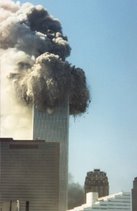

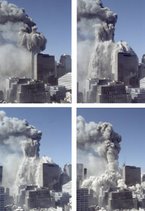

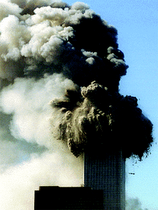

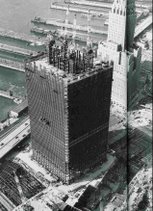
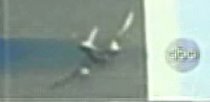
2 comments:
Wow, you've been busy!
Good post, and I wish I had time to read everything here -- but it will have to wait.
great stuff here, Ningen!!
you've got a ton of info eloquently laid here on this blog and you've got the detractors at 911blogger licking their collective wounds with your comments here.
PWN3D!
Post a Comment